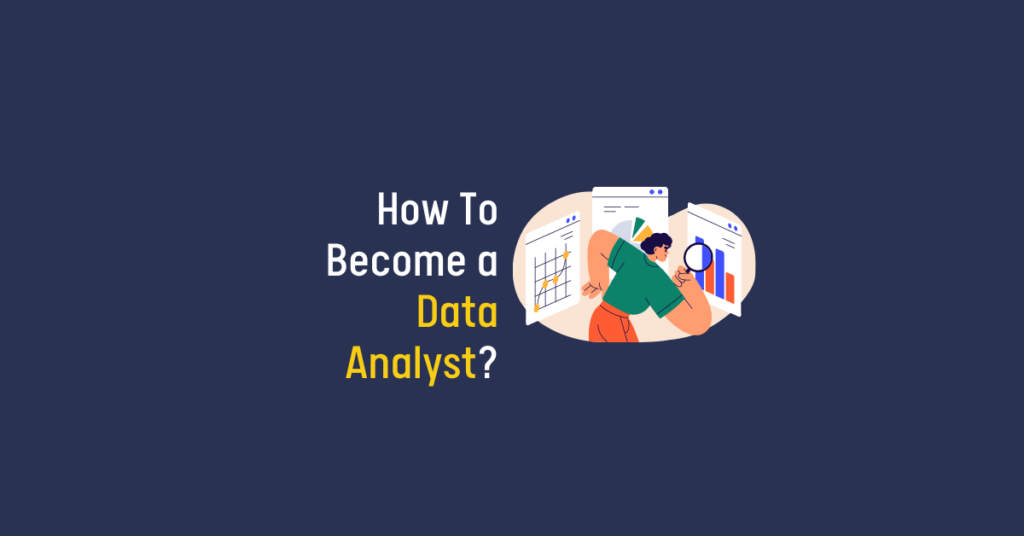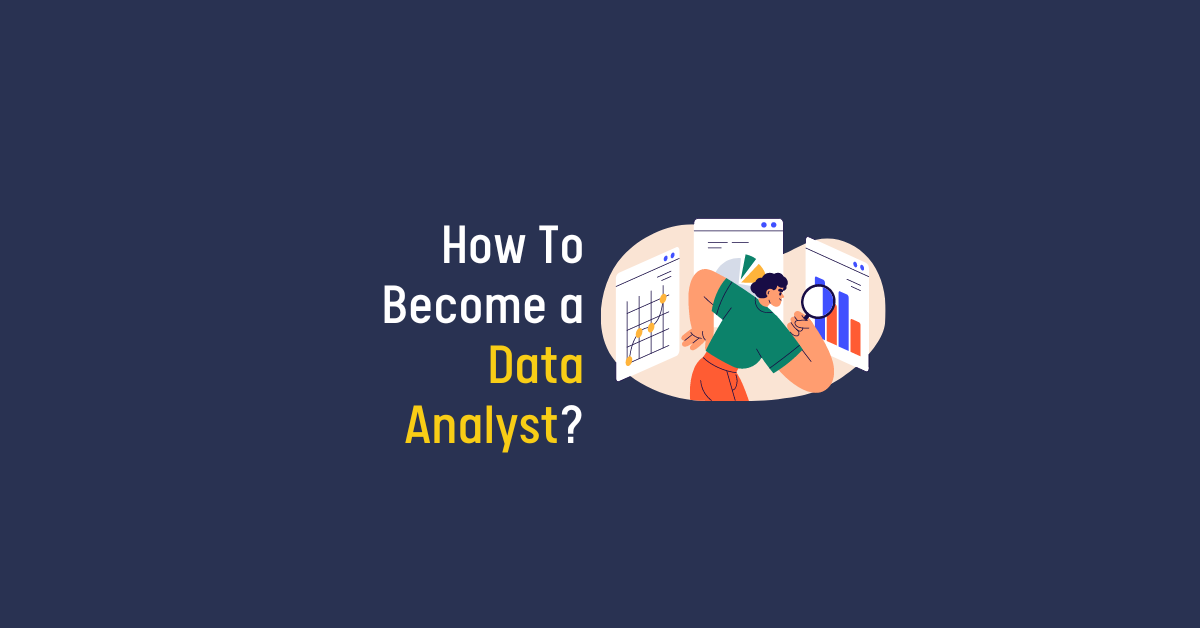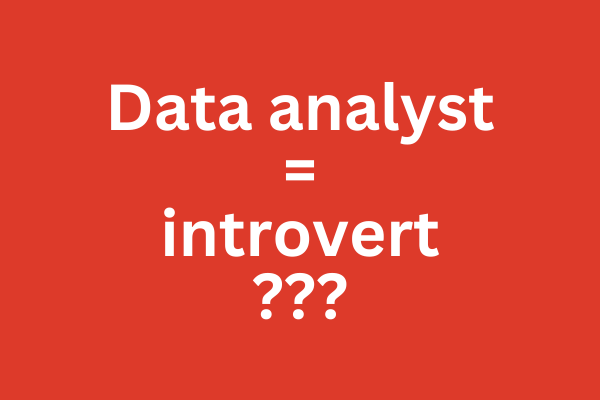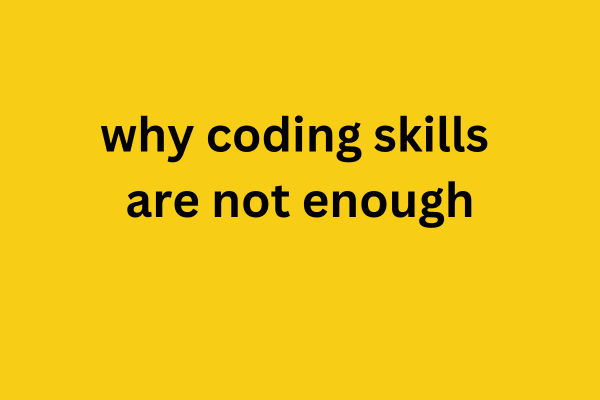
Table of contents
- How to Become a Data Analyst – Introduction
- Learning Excel
- Learning SQL and Databases
- The Data Analyst’s CV and LinkedIn Profile
- The Data Analyst’s Portfolio – GitHub, Tableau, PowerBI
- Data Visualization – Tableau and Power BI
- The Pareto Principle in Learning
- Networking and Applying for Jobs
- How to Become a Data Analyst – Conclusion
How to Become a Data Analyst – Introduction
Welcome to KajoData! Today, I’m going to present a comprehensive guide that answers one of the most pressing questions: “How to become a data analyst?”. Data analytics isn’t just an IT area experiencing its golden age, but also a field offering exciting career opportunities and growth. My experience in this industry has taught me that success in a data analyst role doesn’t solely depend on technical skills. It’s also about the ability to present data in an understandable way, the ability to build your professional image, and strategies for job searching.
In this series of articles, we’ll focus on key aspects essential for starting and developing a career in data analysis. I will discuss both practical skills such as mastering Excel and SQL, and matters related to creating a professional image – preparing an effective CV, building a LinkedIn profile, and creating a portfolio that showcases your skills in practice. Additionally, we’ll touch upon subjects related to data visualization and strategic aspects of job hunting in IT.
The aim of this guide is not only to provide you with technical knowledge but also to show how these skills can be transformed into real benefits in the job market. Whether you’re just starting in IT, or you already have some experience and are looking to transition, these articles will provide you with the necessary tools to achieve your goal of becoming a data analyst. I invite you to read and discover the paths that can open the doors to the world of data analytics for you!
Learning Excel
Every aspiring data analyst must begin their journey with a fundamental tool – Excel. Despite the advanced development of information technologies and AI, Excel remains the cornerstone of analytics. Why? Its universality, wide availability, and ease of use make it the first step for many data specialists.
In this part, we will focus on how to effectively learn Excel and utilize it in analytical practice. First and foremost, mastering basic and most important formulas is crucial. It’s not about memorizing every function available, but focusing on those most commonly used in a data analyst’s work. These include a variety of operations, from simple calculations to conditional functions, and more advanced tools such as VLOOKUP or data processing functions.
Another important element is understanding and practically using pivot tables. These powerful tools allow for quick and efficient analysis of large data sets, facilitating grouping, comparing, and summarizing information in an understandable form.
We also can’t forget about Power Query – a tool for importing, transforming, and automating data processing in Excel. Mastery of Power Query opens doors to more advanced analyses and work automation, invaluable in an analyst’s daily work.
While VBA (Visual Basic for Applications) is not an essential element in an analyst’s arsenal, being aware of its existence and potential applications can be very useful for more advanced projects, where automation or custom data manipulation is needed.
In summary, learning Excel for a data analyst doesn’t mean knowing every possible function, but rather focusing on those tools and techniques that will find practical application in everyday work. It’s a solid foundation that allows you to efficiently analyze data and prepare clear reports, a key element of an analyst’s job. Remember, Excel is not just a tool, but also a language spoken by data professionals worldwide.
Learning SQL and Databases
After mastering the basics of Excel, the next crucial step on the path to becoming a data analyst is learning SQL and understanding databases. SQL, which stands for Structured Query Language, is the standard language used for communicating with databases. For a data analyst, the ability to use SQL is not just desirable but often essential for effective job performance.
SQL allows for extracting, updating, adding, and deleting data from databases – all these operations are the foundation of an analyst’s work. Starting your SQL learning journey, it’s important to focus on several key areas:
- SELECT Queries: These basic queries enable you to read data from a database. They are the foundation from which you should start your SQL learning.
- JOIN and UNION Operations: In databases, information is often scattered across multiple tables. The ability to join these tables using JOIN and UNION operations is crucial for effectively working with data.
- Nested Queries and CTEs (Common Table Expressions): These allow for creating more complex queries and are essential for conducting advanced data analyses.
- Modifications of Database Structure: While not always required from a data analyst, the ability to create, modify, and delete tables, as well as manage indexes, can be very useful.
- Query Optimization: This is a more advanced topic that becomes important as you gain experience. Optimization enables faster processing of large data sets.
It’s worth noting that there are different dialects of SQL depending on the database management system, such as MySQL, PostgreSQL, or Microsoft SQL Server. However, the fundamentals of SQL are fairly universal and transferable across different systems.
For many data analysts, SQL is a daily tool, enabling effective data management and analysis. Its learning opens doors to a deeper understanding of data storage, processing, and analysis methods, which are crucial in today’s data-driven world. In the next chapter, we will discuss how to effectively present these skills in your CV and LinkedIn profile.
The Data Analyst’s CV and LinkedIn Profile
After acquiring technical skills like Excel and SQL, it’s time to focus on aspects that will help you stand out in the job market as a data analyst. Two crucial elements in this regard are crafting an effective CV and an active, professional LinkedIn profile.
Crafting a Data Analyst’s CV
Your CV is the first thing a potential employer sees. It should not only reflect your skills and experience but also be tailored to the specifics of a data analyst role. Here are some tips:
- Clarity and Skill Focus: Ensure your CV is readable with clear sections and bullet points. Concentrate on specific skills and tools you are proficient in (e.g., Excel, SQL, Power BI).
- Professional Experience: List your previous positions, focusing on aspects relevant to an analyst role. Show how your work contributed to the success of projects or the company.
- Projects and Accomplishments: If you have worked on specific data analysis projects, describe them. Include links to your portfolio or online projects where applicable.
- Education and Certifications: List your education and any data analysis-related courses or certifications you’ve completed.
- Tailoring for the Job: Customize your CV for each application, highlighting the most relevant skills and experiences according to the job requirements.
LinkedIn Profile for a Data Analyst
LinkedIn is more than your digital CV; it’s a platform for building professional networks and sharing your expertise. Here’s how you can optimize your profile:
- Professional Photo and Headline: Have a professional profile photo and an attention-grabbing headline that reflects your career ambitions and specialization.
- Summary: Write a concise yet comprehensive summary of your skills, experience, and career goals.
- Work Experience and Skills: Detail your professional experience and skills. Use keywords related to data analysis to help recruiters find your profile.
- Active Participation on the Platform: Regularly post and share content related to data analysis, comment on other professionals’ posts, and engage in industry discussions.
- Recommendations and Endorsements: Ask former employers, colleagues, or clients for recommendations and endorsements of your skills.
Remember, both your CV and LinkedIn profile are your marketing tools. They need to sell your image as a competent, engaged, and continually developing data analyst. In the next part, we will talk about building and maintaining an effective data analyst’s portfolio.
The Data Analyst’s Portfolio – GitHub, Tableau, PowerBI
A portfolio is a critical component in the career of any data analyst. It demonstrates your practical skills, creativity, and experience in solving problems using data. In this part, we discuss how to effectively build a portfolio using tools like GitHub, Tableau, and Power BI.
GitHub for Data Analysts
GitHub, a platform known primarily among developers, can also be an invaluable tool for data analysts. Here’s how you can use GitHub to build your portfolio:
- Store Your Projects: Use GitHub to store SQL codes, Python scripts for data analysis, or other programming projects.
- Document Your Work: GitHub allows for adding descriptions to your projects, providing an excellent opportunity to explain what you worked on and the data analysis techniques you applied.
- Collaboration on Projects: Participating in open-source projects or collaborating with others on GitHub is an excellent way to demonstrate your teamwork skills.
Tableau and Power BI for Data Visualization
Data visualization is a key skill for analysts. Tools like Tableau and Power BI allow for creating interactive and visually appealing visualizations.
- Tableau Public: This free version of the popular data visualization tool lets you publish your dashboards and share them with a broader audience. Build a portfolio that showcases your ability to create a variety of visualizations.
- Power BI: Similar to Tableau, use Power BI to create and share dashboards and reports. Power BI is particularly useful in corporate environments and can be an excellent addition to your portfolio.
Creating an Effective Portfolio
- Choose Relevant Projects for Your Specialization: Showcase projects that best reflect your skills and specialization, such as financial analysis, natural language processing, etc.
- Contextualize and Process Describe: For each project, include a description of what you aimed to achieve, the techniques used, and the outcomes.
- Demonstrate a Variety of Skills: Your portfolio should showcase a diversity of skills, from raw data analysis to advanced visualization.
- Keep Your Portfolio Updated: Regularly update your portfolio, adding new projects and improving existing ones.
Building an effective portfolio requires time and effort but is invaluable in the job-seeking process as a data analyst. In the next part, we’ll focus on data visualization using Tableau and Power BI.
Data Visualization – Tableau and Power BI
Data visualization plays a key role in a data analyst’s work, as it allows for converting raw data into clear, accessible graphical representations that can be easily understood and presented. In this part, we focus on two major data visualization tools: Tableau and Power BI.
Tableau – Intuitive Data Visualization Tool
Tableau is one of the most popular data visualization tools, valued for its intuitiveness and ability to create sophisticated and aesthetically pleasing dashboards and reports.
- Ease of Use: Its drag-and-drop interface makes it accessible even for beginners in data analysis.
- Interactive Dashboards: Tableau enables the creation of interactive dashboards that allow users to explore data dynamically.
- Wide Range of Visualizations: From simple charts to more complex geographic visualizations, Tableau offers a wide range of options.
Power BI – Data Visualization in the Microsoft Ecosystem
Power BI, part of the Microsoft product family, is also a powerful tool for data visualization, integrating well with other Microsoft products like Excel and Azure.
- Integration with Excel and Azure: If you’re already familiar with the Microsoft ecosystem, Power BI will be a natural extension of your skills.
- Advanced Analytical Capabilities: Power BI offers advanced features such as natural language processing and machine learning, allowing for deeper data analysis.
- Accessibility and Scalability: It is a tool available to a wide range of users, from small businesses to large corporations.
Leveraging Tableau and Power BI in Your Career
- Learn by Doing: Start by creating simple visualizations, gradually moving to more complex projects. Utilize online resources and tutorials.
- Building Your Portfolio: Use Tableau Public and Power BI to create and share your work, helping to build an impressive portfolio.
- Developing Analytical Skills: Beyond the visualization tools themselves, focus on developing skills in data interpretation and analysis, ensuring your visualizations are not only attractive but also meaningful.
- Customizing for Audiences: Learn to adapt the style and scope of your visualizations to meet the needs and expectations of different audiences, from operational staff to top-level management.
In the next part, we will discuss the Pareto principle in learning and why it is so important in developing analytical skills.
The Pareto Principle in Learning
The Pareto Principle, also known as the 80/20 rule, is a powerful concept in the learning process, especially when it comes to acquiring skills in data analytics. This principle suggests that approximately 80% of effects come from 20% of causes. In the context of learning data analytics, it means focusing on the most important skills and tools that yield the greatest benefits.
Applying the Pareto Principle in Learning Data Analytics
- Focus on Key Skills: Instead of trying to learn everything, better to concentrate on key skills and tools that are most in demand in the industry, such as SQL, Excel, Tableau, Power BI.
- Efficiency in Learning: Concentrating on the 20% most important topics allows you to achieve 80% of the necessary skills. This leads to quicker competency in a particular area.
- Choosing Projects and Technologies: Rather than spreading yourself thin over many different technologies and projects, select those that align best with your career goals and are most valuable to employers.
- Value of Practical Knowledge: The value of practical knowledge often outweighs theoretical understanding of all aspects of data analytics. Practical experience in solving real problems is often more valuable than theoretical knowledge of many tools.
Implementing the Pareto Principle Practically
- Market Analysis: Research which skills are most in demand by employers in the data analytics field, and focus on learning them.
- Developing Soft Skills: Skills like communication, data presentation, and problem-solving are as important as technical analytical skills.
- Continuous Learning: The IT and data analysis fields are rapidly evolving. Regularly update your knowledge to stay abreast of the latest trends and technologies.
- Networking and Knowledge Sharing: Participating in data analytics communities, such as online forums, user groups, or conferences, allows for knowledge exchange and experience sharing with other professionals.
Remember, the Pareto Principle is primarily about managing your time and effort in learning efficiently. In the next part, we’ll discuss how networking and applying for jobs can impact your career in data analysis.
Networking and Applying for Jobs
Effective networking and strategic job applications are crucial in building a career as a data analyst. These two elements, often overlooked, can significantly accelerate your professional development and open up new opportunities.
Networking in the Data Analytics Industry
- Building Professional Relationships: Networking is not just about acquiring contacts, but more about building lasting professional relationships. It’s important to engage in discussions, share knowledge, and assist others.
- Using Online Platforms: LinkedIn, industry forums, and discussion groups are excellent places to make contacts with other professionals in the field. Regularly posting and participating in discussions increases your visibility.
- Participating in Industry Events: Conferences, webinars, and networking meetings are great opportunities for direct contacts and exchanging experiences.
Applying for Positions
- Tailoring CV: Each application should be carefully prepared, reflecting the specifics of the job offer. This shows your interest and professionalism.
- Using LinkedIn for Job Searches: LinkedIn offers extensive opportunities for job searches and direct contact with recruiters.
- Preparing for Interviews: In addition to technical preparation, work on presenting your projects and experiences, as well as responding to questions about soft skills.
- Feedback after Interviews: Regardless of the outcome, it’s always valuable to ask for feedback. This information can help you grow.
Effective Networking and Applying
Effective networking and applying require time and commitment but are investments that can lead to better job offers, valuable advice and insights, and a broader understanding of the industry. Remember, every connection made and every application submitted is a step towards developing your career.
How to Become a Data Analyst – Conclusion
To conclude our guide, becoming a data analyst is a process that requires both technical skills and a strategic approach to your career. It’s a path that offers many rewarding opportunities but also demands continual learning, adaptation, and commitment.
Key Steps to Becoming a Data Analyst:
- Learning Fundamental Tools: Acquire solid foundations in Excel, SQL, and data visualization tools like Tableau and Power BI.
- Developing Technical and Soft Skills: Beyond learning tools, focus on honing analytical thinking, critical reasoning, and skills in presenting and communicating data.
- Building and Maintaining a Portfolio: Regularly update your portfolio to reflect your professional growth and skill set.
- Active Networking and Community Involvement: Develop your professional network and participate in industry communities to enhance your chances of finding attractive job opportunities.
- Strategic Job Applications: Apply thoughtfully and purposefully, tailoring your CV and cover letter to each job posting.
- Continual Learning and Updating Skills: The field of data analytics is dynamic and constantly evolving. Keep yourself updated with the latest trends and technologies.
- Adaptability and Flexibility: Be open to changes and ready to adapt in a rapidly changing technological environment.
Summary
Being a data analyst is more than just a job; it’s a continuous journey of discovery, learning, and adaptation. In this guide, we have outlined the fundamental steps that can help you start this journey. Remember, each individual has a unique path of development, so it’s important to find a learning and working style that best suits your goals and professional aspirations.
I hope this guide has inspired you to take the next steps in your data analyst career. Good luck on this exciting career path!
Other interesting articles
- ChatGPT in IT: Can Artificial Intelligence Hinder Your Career?
- Professional Burnout and Impostor Syndrome – Experience of looking for a job in IT
- How to Rediscover Lost Motivation? Insights from a Data Analyst
- Active Listening, Giving Up, Mistakes That Can Cost You a Job in IT
Want to read in Polish? No problem!
That’s all on this topic. Analyze in peace!
Did you like this article 🙂?
Share it on Social Media 📱
>>> You can share it on LinkedIn and show that you learn something new every day.
>>> You can throw it on Facebook – and perhaps help a friend of yours who is looking for this.
>>> And remember to bookmark this page, you never know if it won’t come handy in in the future.
You prefer to watch 📺 – no problem
>>> Subscribe and watch my English channel on YouTube.



